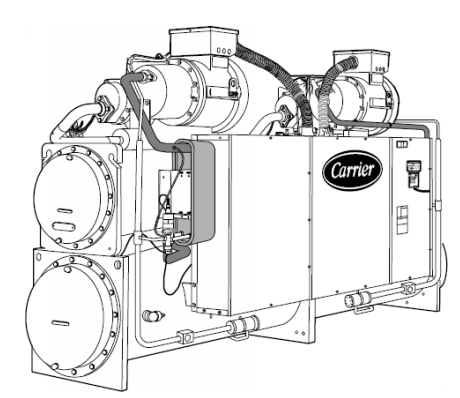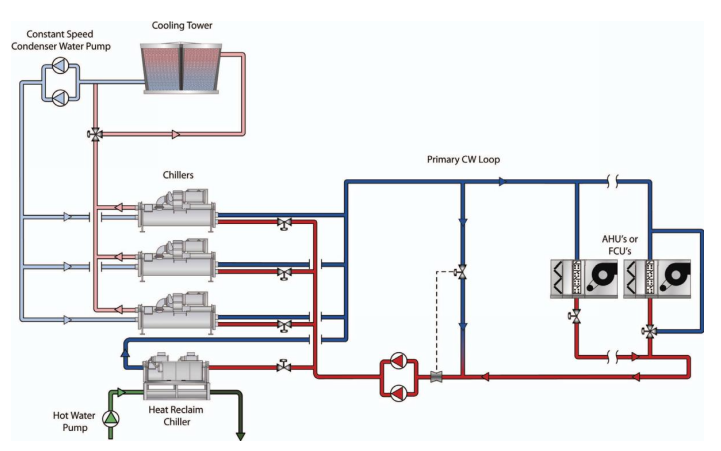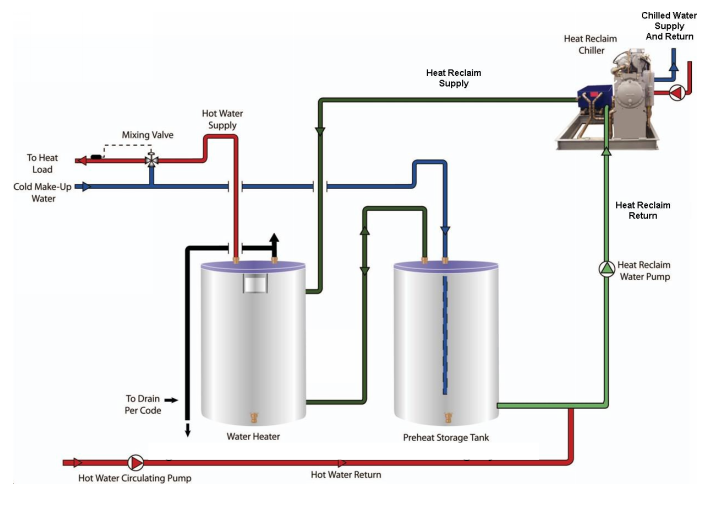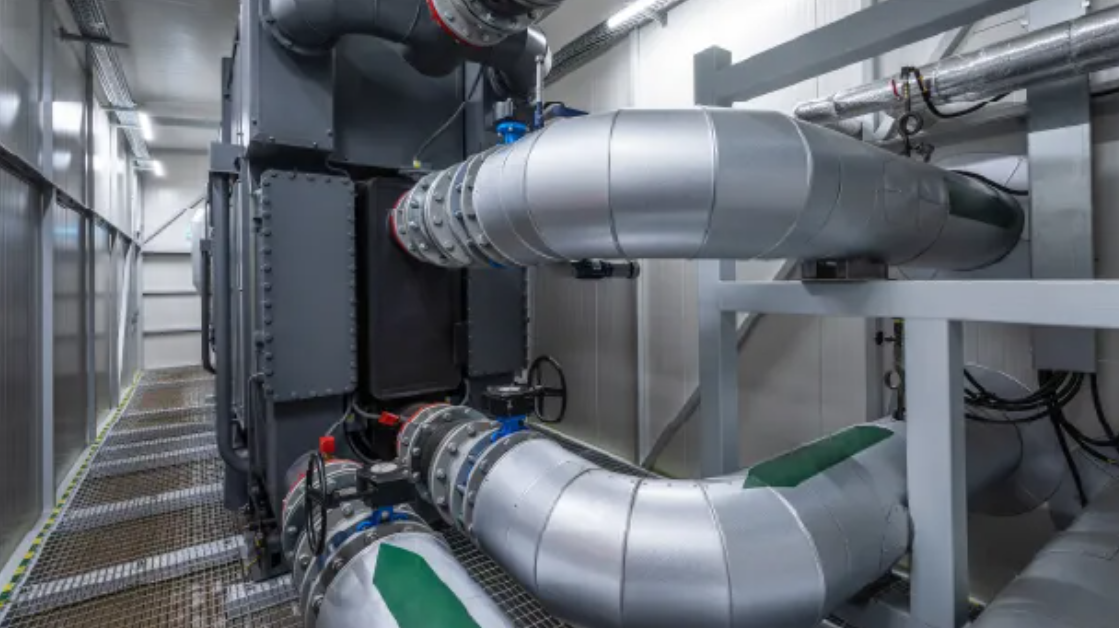
In many cases, excess heat from a chilled water system is rejected into the environment—but this wasted heat can amount to 25% more energy than the cooling that the process creates.
Not harnessing this energy is a wasted opportunity.
To identify the potential use for waste heat, system efficiencies must be understood.
System efficiency is known as the coefficient of performance, or COP. When a chiller can both provide cooling and heating via a heat recovery system, the COP can be greatly increased.
Minimize Wasted Heat
The first step to reduce wasted heat is to minimize the amount of heat that must be pumped through the cooling tower.
The easiest way to do this is to install high-efficiency chillers, as they simply generate less wasted heat and convert more energy into chilled water.
Another way to minimize the wasted heat is to divert it to a device that can capture the heat and convert it to a useful heat source. Chillers that can do this are known as heat reclaim chillers.
When dealing with vapor compression, chillers must expel heat from the condenser to continue the refrigeration process. In water-cooled chiller systems, the condenser reduces the refrigerant pressure by transferring heat to the condenser water, which raises the leaving condenser water temperature (LCWT).
This means the condenser can generate sufficiently warm water for many purposes.
A common mistake:
Some may suggest increasing this LCWT to provide the necessary heat to produce hot water. However, doing this will increase the chiller lift, which decreases the chiller plant efficiency and increases energy consumption by the chiller.

A chiller designed for heat reclaim will generate high-pressure refrigerant within the condenser that can be used to produce higher temperature condenser water.
They are very similar to a conventional “cold water” chiller, but modified to optimize heating performance as well. These modifications include:
- Optimized compressor motors
- A heat recovery condenser bundle for each refrigerant circuit
- A leaving condenser water temperature control system.
Heat reclaim chillers can produce water temperatures between 120°F and 140°F when they are operating—warm enough to satisfy many applications. However, some applications require a readily available hot water source at all times.
When the building cooling load is satisfied, the heat reclaim chiller must shut off to ensure the chilled water loop is not over-cooled.
This will stop the generation of hot water, so if a constant supply of hot water is necessary, we recommend using a hot water storage tank paired with a backup water heater.

Conclusion
Capturing useful heat is possible with heat reclaim chillers, applied to meet hot water and chilled water system needs.
These types of systems are especially useful in Alberta’s climate and have a lower upfront cost than some other chiller systems while having a higher COP.
Heat reclaim chillers also ensure:
- Sufficient heat is captured for useful purposes
- Maximized chiller efficiency
- A controlled source of hot water with a stable chilled water system operation is provided.
Compared to a heat pump chiller, a heat reclaim chiller is typically a lower upfront investment, still provides heating and cooling, and increases the efficiency of the chiller.
The major difference is that a heat reclaim chiller must have a cooling load to simultaneously produce hot water, while a heat pump chiller must operate in heating mode or cooling mode.
If you’re trying to figure out which chiller system is right for your project, get in touch with our experts for bespoke advice and support.


